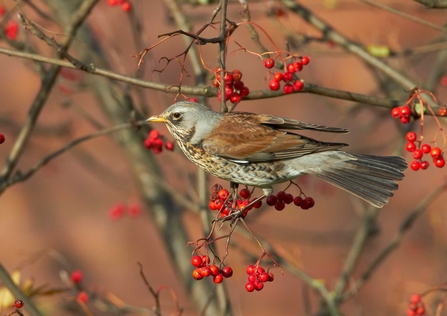Winter in the UK is often associated with the quietening down of nature. Leaves fall from the trees in showers of autumnal colour, some mammals and reptiles hibernate to escape the bitter cold and the boom of butterflies seen over summer disappears.
It appears that nature lovers shall have to wait for spring to arrive again before heading out to explore. However, this would be a mistake.
Believe it or not, British winters provide a haven for a diverse range of species migrating from regions where winters are much harsher. A majority of these species are birds, making winter a brilliant time for keen birders to scan the skies. Here are a few winter visitors to look out for…








